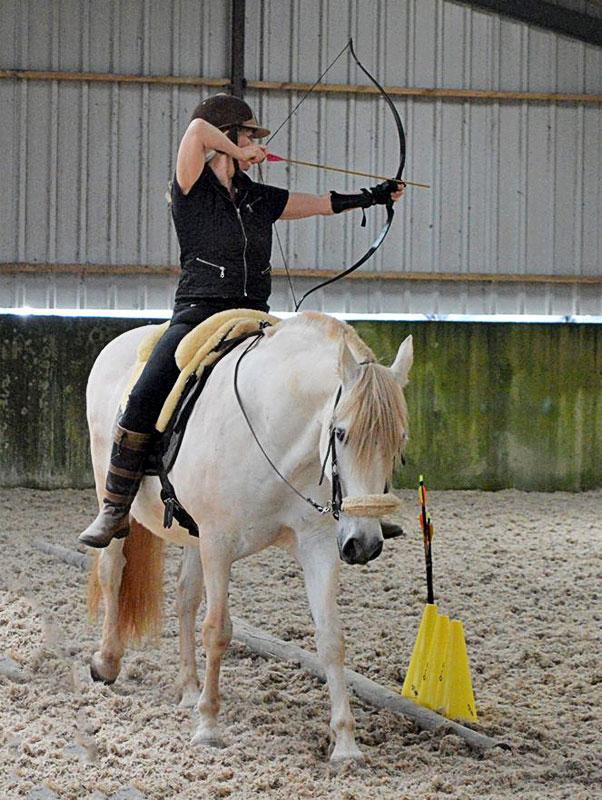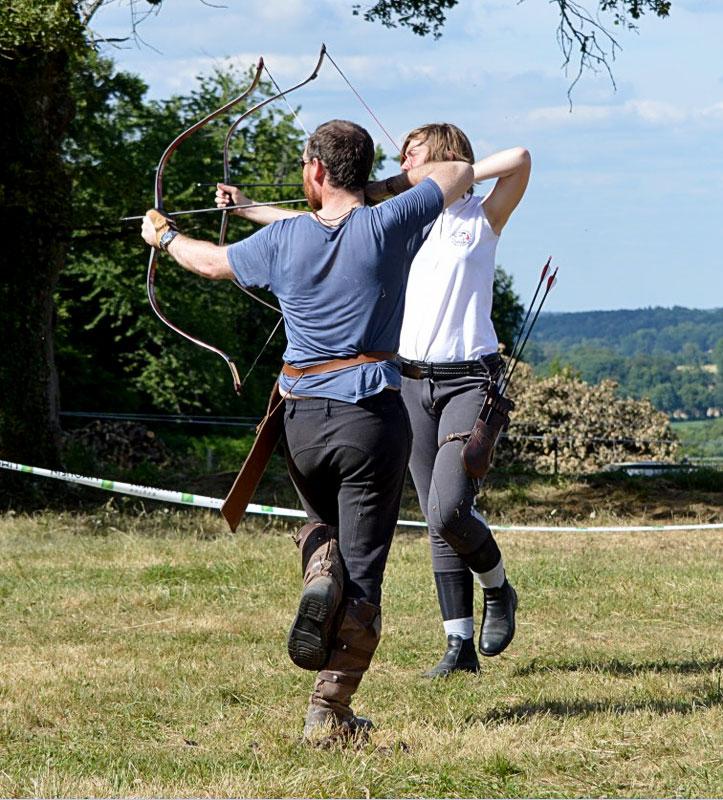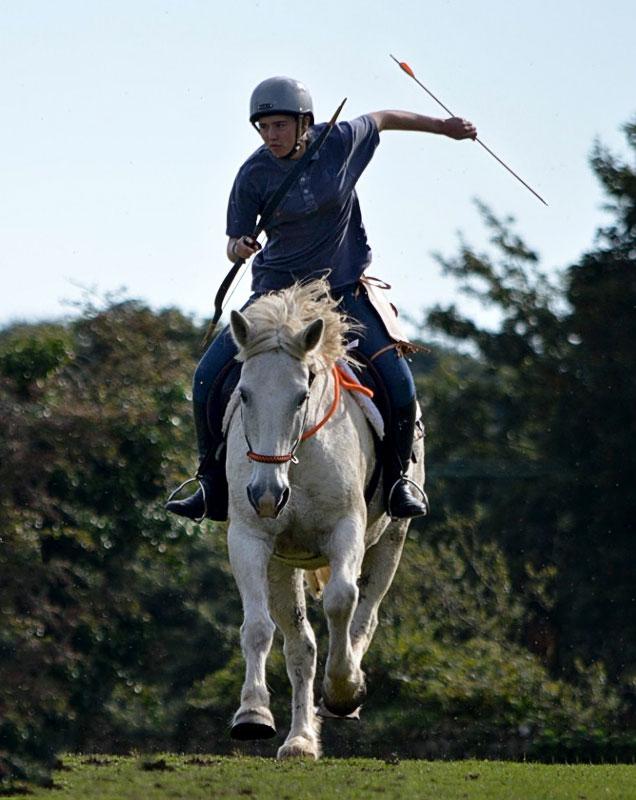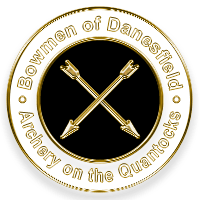Trudi our Horseback Archer

Several distinct styles of horseback archery originating from different parts of the world form part of the modern sport. The Korean track requires the archer to shoot at targets positioned low down only a few metres from the track, whereas the Hungarian style has higher targets grouped together requiring longer distance shooting over constantly changing distances, demonstrating skills that would have been needed in the past for mounted warfare. The Turkish Qabaq event involves shooting a target high overhead with blunt arrows and perhaps the most fun event is the Polish hunt track, simulating a hunt with a long winding course, shooting at targets (often 3D animal targets) which can be at varying distances on both sides of the track.

Some of the appeal of this fast, exciting sport is the freedom it gives to the horses. They are not only ridden with no contact but without reins at all most of the time. Most horseback archery tracks are run over 90 metres, with targets at regular intervals alongside, and of course, the horse needs to be ridden without reins as you need both hands on the bow. When the reins are used it is as neck reins, so they can easily be moved to the start of the track while holding a bow and a handful of arrows! Horses are trained to follow voice and seat cues to be responsible for maintaining their speed and direction with minimal input from the rider.

So why complicate matters and shoot from horseback, what’s wrong with two feet? Well, I think it helps your coordination on the ground when you start to shoot from a horse and of course, it adds an element of fun and challenge; some of the archers at my HBA club (Cotteswold Mounted Archers http://www.mountedarchery.org.uk/) are also target archers. It is very much an instinctive method of shooting and an experience all archers would be sure to benefit from.
If you’d like to find out more about the sport, get in touch with the governing body in the UK, the British Horseback Archery Association (www.bhaa.org.uk) and they can put you in touch with coaches in your area; the sport is rapidly growing in popularity and new clubs are starting up all the time.
